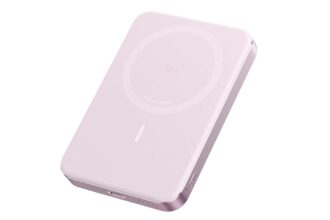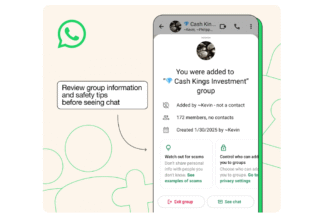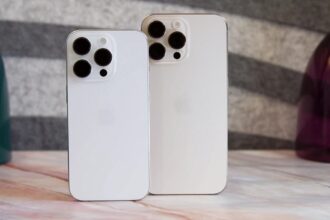Will Agentic AI Change the Way Creatives Work? These 12 AI Tools Are Reshaping the Creative Industry
The creative industry has always been a bastion of human imagination and innovation, but the rapid development of artificial intelligence (AI) is promising to change the landscape forever. As AI evolves beyond simple automation into what experts are now calling "agentic AI"—systems that can make independent decisions and take actions based on their learning—the way creatives work is set to be reshaped in profound ways. In this blog post, we’ll explore how these advanced AI tools are influencing creativity and innovation, and examine twelve key tools that are leading the charge in transforming creative processes.
Understanding Agentic AI
Agentic AI refers to systems capable of making autonomous decisions based on a set of given parameters and learned experiences. Unlike traditional AI systems that respond to specific inputs with pre-defined outputs, agentic AI can learn from interactions, analyze vast datasets, and make informed choices that can drive creative endeavors. This capability opens up a myriad of possibilities for creatives across various industries—from professionals in advertising and design to writers and musicians.
The Impact of AI on Creativity
Enhanced Efficiency
One of the most immediate benefits of incorporating AI tools is enhanced efficiency. Creatives can leverage AI to automate repetitive tasks such as data entry, image enhancement, or even initial drafts of content. This frees up time and mental energy, allowing artists, designers, and writers to focus on more complex and fulfilling aspects of their work.
New Forms of Collaboration
AI tools enable a different form of collaboration—between human creatives and AI. This partnership can inspire new ideas and lead to innovative outcomes that might not have emerged otherwise. Rather than replacing human creativity, AI acts as a creative partner that can suggest new approaches, deliver insights, and enhance the creative process.
Democratization of Creativity
With the advent of AI tools, creative capabilities are becoming more accessible than ever. Aspiring artists and content creators who may not have the budget to hire professional services can use AI to help bring their visions to life. This democratization opens the door to a more diverse range of perspectives and ideas, enriching the creative landscape.
12 AI Tools Reshaping the Creative Industry
1. Canva
Canva has revolutionized graphic design with its user-friendly interface, allowing anyone, regardless of design expertise, to create stunning visuals. AI algorithms assist in generating template designs and suggesting layouts, streamlining the design process.
2. DALL-E 2
From OpenAI, DALL-E 2 is a sophisticated image generation AI capable of creating detailed, unique images from simple prompts. This tool can be an invaluable asset for artists and designers looking for inspiration or unique content to include in their projects.
3. ChatGPT
Also from OpenAI, ChatGPT is a language model that can assist in content creation, brainstorming ideas, or even drafting entire articles. Writers can use ChatGPT to overcome writer’s block and generate creative narratives or dialogue.
4. AIVA
AIVA (Artificial Intelligence Virtual Artist) is an AI composer that helps musicians create original compositions in various genres. It offers a unique approach to music creation by analyzing patterns and styles, making it easier for musicians to experiment and innovate.
5. RunwayML
RunwayML leverages AI for video editing and visual effects. With its capabilities, filmmakers can automate intricate tasks like rotoscoping and color grading, making high-quality video production more accessible than ever.
6. Copy.ai
Copy.ai specializes in generating marketing copy, blog posts, and social media content. By simply inputting basic information, creatives can receive multiple writing options, saving them time and effort while maintaining quality.
7. Artbreeder
Artbreeder allows artists to create unique images by blending and modifying existing works. This collaborative platform emphasizes experimentation, enabling users to generate aesthetic visuals without needing high-level artistic skills.
8. Jasper
Jasper is an AI writing assistant that helps marketers and content creators produce engaging copy at scale. Its ability to understand context and audience personas contributes to more targeted and effective content creation.
9. DeepArt.io
Using a sophisticated neural network, DeepArt.io transforms photos into artworks by mimicking the styles of famous artists. This tool opens new avenues for creatives looking to fuse photography with art.
10. Lumen5
Lumen5 simplifies the process of creating video content from text. For marketers and content creators, this means they can turn blogs or articles into engaging videos quickly, allowing for more diverse media utilization.
11. Soundraw
Soundraw is a generative music AI that allows users to create and customize original music tracks based on their preferences. This can be particularly useful for content creators looking for custom soundscapes.
12. Lately
Lately uses AI to analyze content marketing and social media strategies, providing insights that help users understand what works best for their audience. This feedback loop informs better content creation and planning.
Conclusion: Embracing the Future of Creativity
As the landscape of the creative industry evolves with the introduction of agentic AI tools, one thing is clear: these technologies can enhance and elevate human creativity rather than replace it. By automating mundane tasks, serving as collaborative partners in brainstorming and idea generation, and democratizing access to creative tools, AI is ushering in a new era of creativity filled with potential.
For creatives, embracing these AI tools can lead to greater innovation, more efficient workflows, and expanded opportunities for expression. The key lies in understanding that AI should function as an ally, amplifying human creativity instead of diminishing its value. In the ever-changing canvas of the creative industry, blending human artistry with AI’s capabilities might just be the brushstroke that brings forth a masterpiece of collaboration.




